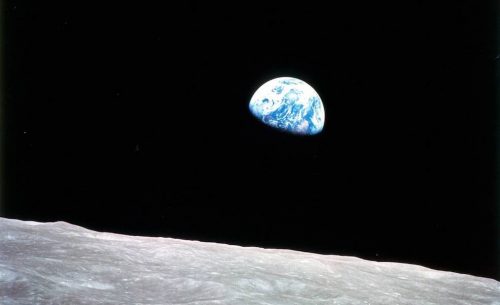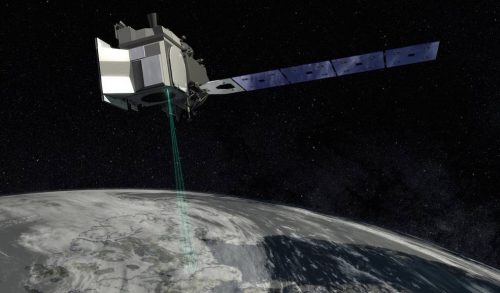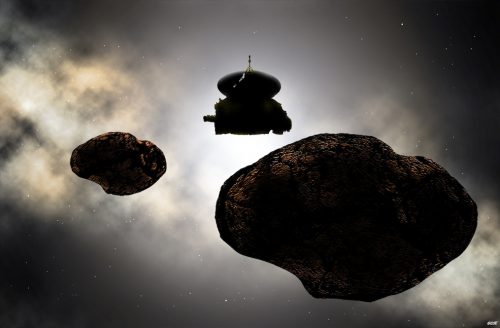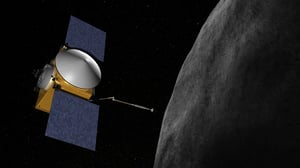Space exploration firsts, eclipses, and a super blood wolf moon.
Fifty years ago on Christmas Eve, Apollo 8, the first manned mission to the moon, transmitted startling pictures of the moon’s landscape to spellbound viewers on earth. But it was this iconic picture of the earth, taken by astronaut Bill Anders, which captured the imagination of the world.
 The moon's landscape / Image: NASA
The moon's landscape / Image: NASA
So much has happened and changed in those fifty years! Consider the following series of historic events that took place in just the first week of 2019.
History in the making
On December 31, 2018, NASA’s Osiris REx broke the record for orbiting the smallest celestial object to date—the asteroid Bennu—and orbiting at the closest distance of any space object—within a mile of its center. Some surprises from the initial encounter are a higher number of large boulders on its surface (its radius is only 0.2 miles) and the presence of hydrated minerals—meaning that at some point the asteroid or its parent was in contact with water.
 The OSIRIS-REx mission to asteroid Bennu approaching the edge of the solar system / Image: NASA
The OSIRIS-REx mission to asteroid Bennu approaching the edge of the solar system / Image: NASA
History was also made the following day, Jan. 1, by the New Horizons robotic probe. At 32,000 mph, it zipped by Ultima Thule, the most distant object to be explored in our solar system, 4 billion miles away! The initial images show this Kuiper Belt object is composed of two lobes—a contact binary—with higher resolution data expected in the coming weeks.
 An illustration of the the New Horizons spacecraft flying by Ultima Thule / Image: NASA
An illustration of the the New Horizons spacecraft flying by Ultima Thule / Image: NASA
This fly-by is a significant achievement in other ways. According to Alan Stern, the Principal Investigator on the New Horizon’s team, it is the first time such a small object has been tracked down successfully by such a high speed craft.
Finally, just a few days ago, China landed a spacecraft on the far side of the moon. First seen from space by the Apollo 8 astronauts (mentioned above), this side of the moon is never visible to us on earth. The Chang’e 4 team needed a relay satellite to communicate with the lander, since the moon actually blocks any signals from earth. The land rover will soon collect data and send it back to earth in the same way. Bob Trembley of the Vatican Observatory blog, “The Catholic Astronomer,” did a fantastic job commenting on this unique moon mission for those who are interested in the details.
January Night Skies
Here are some rather spectacular sights you can see this month.
Solar and Lunar eclipses
On the evenings of January 5 and 6, a partial solar eclipse took place which will be followed in two weeks by a lunar eclipse on January 20 and 21. For pictures and details, you can go here.
The First New Moon
Beginning January 7, the new moon was visible in the western sky shortly after sunset. It is often difficult to see as it sets quickly, so it can be a fun challenge to catch a glimpse of it.
Have you seen the first new moon of 2019 yet?
For fun, if you have kids or grandkids in your life, you can make your own calendar of moon phases. Times for both moon/sunrise and moon/sunset are here. Or maybe, make one just for yourself!
The Moon and Planets
The Crescent moon will be near Neptune early in the evening on January 10 and 12. The almost half moon will hang out near red Mars at dusk; both will be in the southwestern sky.
January 17 will find the moon close to the orange star Aldebaran (the eye of Taurus)!
The first full moon of January, known as the Wolf Moon, is a supermoon this year and will also produce a lunar eclipse known as a blood moon—visible in North America shortly after midnight EST. This “trifecta” of lunar events, dubbed the Super Blood Wolf Moon, occurs on January 22.
Later that morning, in the pre-dawn southeastern sky of January 22, the planets Venus and Jupiter, although visible to the naked eye, are close enough for the next few mornings to fit in a binocular’s field of view.
Finally, on January 31, in the southeastern pre-dawn sky, the old crescent moon appears between Jupiter and Venus, and, sometime after 6 a.m., Saturn rises within two fist diameters to the lower left of the moon.
For a complete list with more details and visuals, you can click here. To see what's happening in the night sky through 2019, click here.
What is it about standing in the velvet stillness of the dark, gazing at the heavens or facing the easter horizon in the pre-dawn hush that so entrances us? May your contemplation of the sky bring you closer to the "Creator of the Stars of Night" as you listen to this lovely hymn!
Featured Image: OSIRIS-REx / Credit: Nasa

